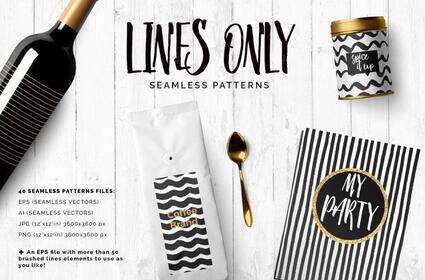How to Create Line Patterns in Adobe Illustrator
In today’s tutorial, we’re going to take a quick look at the process of creating a set of vector line patterns in Adobe Illustrator, using nothing more than some basic shapes that we’re going to adjust here and there.
So, assuming you already have the software up and running, let’s jump straight into it!
Follow along with us on the Envato Tuts+ YouTube channel:
Looking to download vector line patterns? Check out the following article for our recommendations:
Adobe Photoshop
40+ Best New Line Patterns (Vector & PSD)
Melody Nieves
1. How to Set Up a
New Project File
1.
As with every new
project, we’re going to kick things off by setting up a New Document. So head over to File > New (or use the Control-N
keyboard shortcut), and use the following settings:
Profile: Web
Number of Artboards:
3
Spacing:
200 px
Columns:
3
Width: 400
px
Height: 400 px
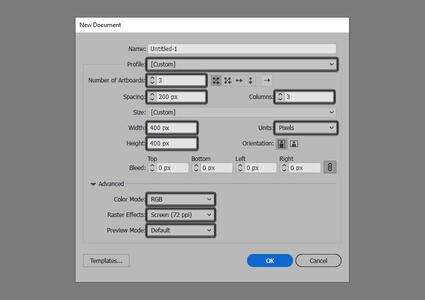
2. How to Create
the First Pattern Variation
2.
Now that we’ve
finished setting up our project file, we can start working on our first repeating pattern
segment, which we will later use to create the actual pattern.
Step 1
Create the main shape for the background using a 400 x 400 px square, which we will color using #78B9FF and then
center align to the first Artboard
using the Align panel’s Horizontal and Vertical Align Center options.
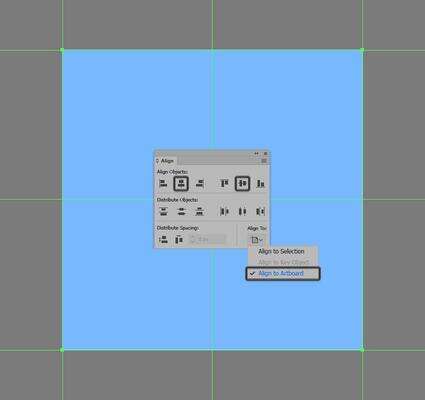
Step 2
Grab the Pen
Tool (P), and draw a diagonal line using a 4 px thick Stroke
(#FFFFFF) starting from the background’s upper-left corner
and going all the way down to its bottom-right one.
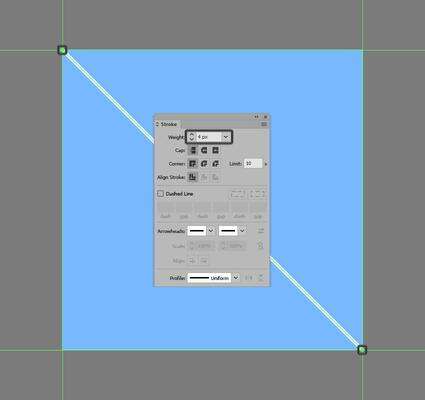
Step 3
Adjust the shape
that we’ve just created by heading over to Effect
> Distort & Transform and applying a Zig Zag effect with the following settings:
Size:
4 px
Absolute:
checked
Ridges per segment:
15
Points: Smooth
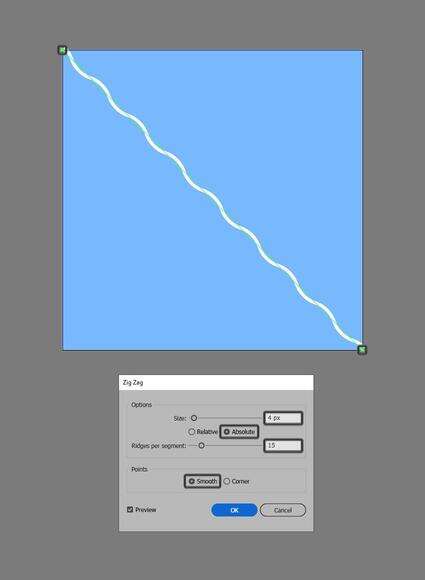
Quick tip:
when adjusting the effect, make sure you use an odd number for the Ridges per segment input box since
otherwise when you create the larger pattern, your lines won’t align properly.
Step 4
With the resulting shape selected, add the bottom-left lines by right clicking and then going to Transform > Move where we will
enter -8 px in the Horizontal value field and 8 px in the Vertical one, making sure to press the Copy button in order to create the first line.
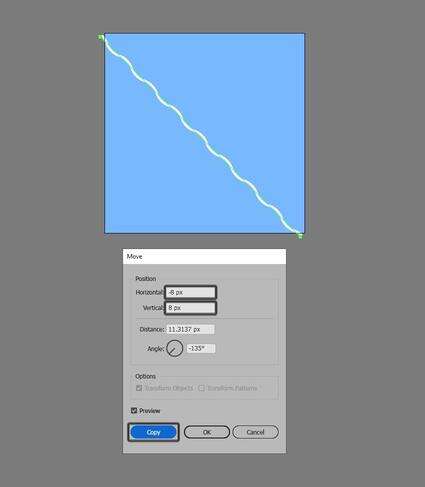
Step 5
Once you have the first copy, simply use the Control-D keyboard shortcut (24 times) to duplicate the
action until you've filled in the lower empty space.
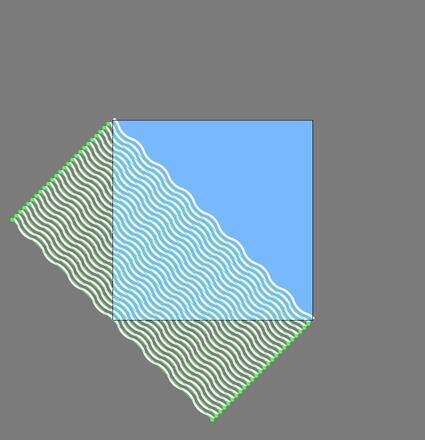
Step 6
Add the top-right lines by selecting the initial stroke again, and then
going through the same process, making sure to reverse the direction of
the Position, by using a value of 8 px for the Horizontal field and -8 px
for the Vertical one.
Once you have
the first copy, add the remaining ones using the Control-D keyboard shortcut (23 times), making sure to
select (Select > Same > Stroke
Color) and group all of them together afterwards using the Control-G keyboard shortcut.
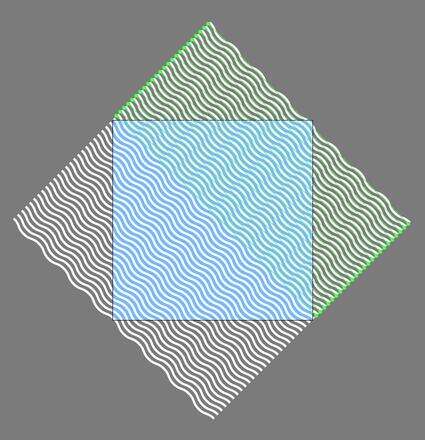
Step 7
Finish off the current pattern by creating a copy (Control-C) of the background, which we will paste in front, and
then with both it and the diagonal lines selected, simply right click > Make Clipping Mask.
Once you’re done, make sure
you select the resulting shapes and the background, and then group (Control-G) them together before moving
on to the next pattern.
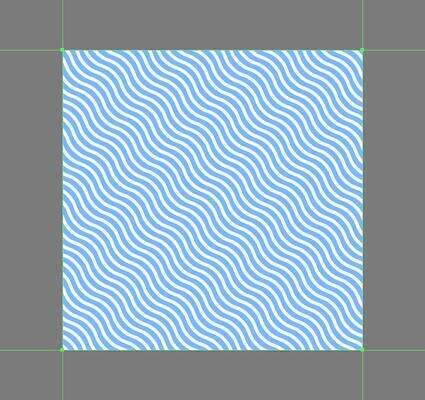
3. How to Create
the Second Pattern Variation
3.
Assuming you’ve
finished working on the first pattern’s repeating segment, move on to the neighbouring
Artboard, where we will gradually
build the next one.
Step 1
Start working on the pattern’s first column of repeating shapes by
creating a 20 x 20 px square, which
we will color using #FFE180 and then position in the bottom-left corner of the Artboard, as seen in the reference image.
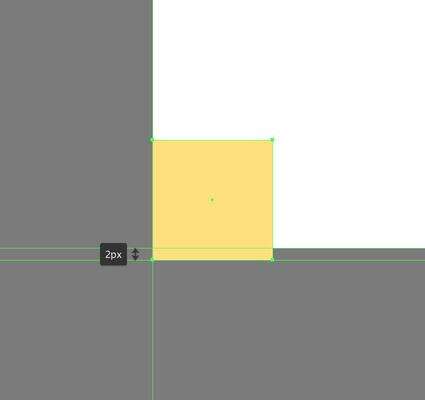
Step 2
Adjust the shape that we’ve just created by selecting its right anchor
points using the Direct Selection Tool
(A), and then pushing them to the bottom by 16 px using the Move tool (right click >
Transform > Move > Vertical > 16 px).
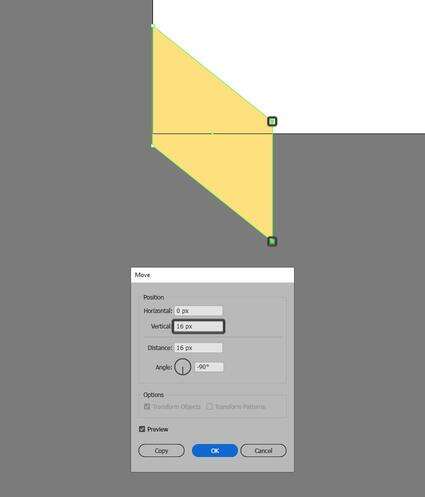
Step 3
Give the resulting shape an outline using the Stroke method, by creating a copy (Control-C) of it, which we will then paste in front (Control-F) and adjust by first changing
its color to #191515, and then setting its Stroke Weight to 4 px and its Corner to Round Join. Once you’re done, make sure
you select and group the two shapes together using the Control-G keyboard shortcut.
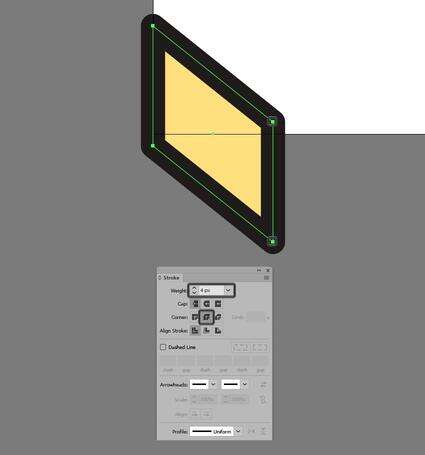
Step 4
Create the right side of the column using a copy (Control-C > Control-F) of the shapes that we’ve just grouped,
which we will vertically reflect (right
click > Transform > Reflect > Vertical) and then position as seen
in the reference image so that their paths overlap.
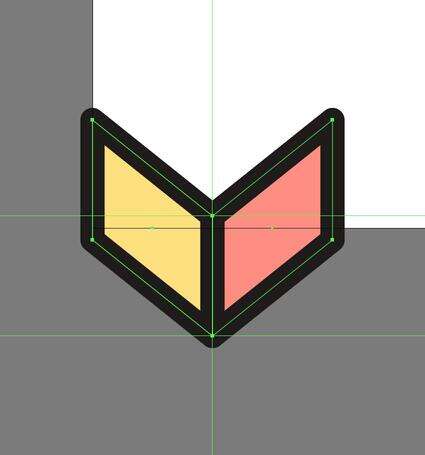
Step 5
Add the column’s second row by selecting the shapes that we have so far
and then dragging them up while holding down the Shift key (in order to drag in a straight line) and the Alt one (in order to create the
duplicates), making sure to flip the colors as seen in the reference image.
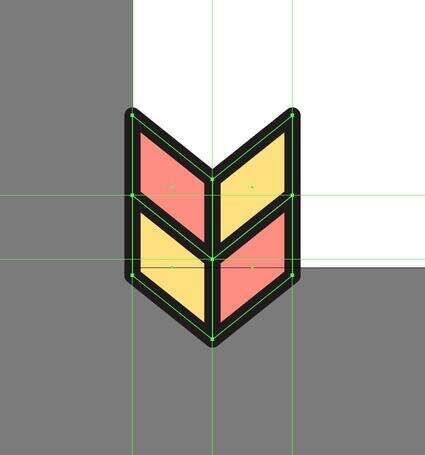
Step 6
Create the remaining upper rows by using the select and drag method to
create the first instance, and then adding the remaining duplicates using the Control-D keyboard shortcut (nine
times), making sure to remove the last row. Take your time, and once you’re
done, select and group all of them together using the Control-G keyboard shortcut.
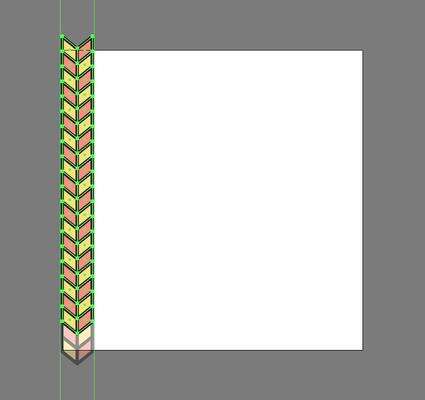
Step 7
Finish off the pattern by adding the remaining nine columns using the
select and drag method, making sure to group (Control-G) and then mask them using a 400 x 400 px square (desired shapes selected > right click > Make Clipping Mask).
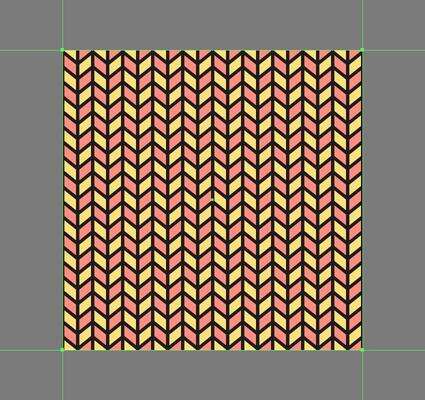
4. How to Create
the Third Pattern Variation
4.
We are now down to
our third and last repeating pattern segment, so assuming you’ve already
positioned yourself on the remaining Artboard, let’s jump straight into it.
Step 1
Start by creating the main shape for the first row using a 40 x 40 px square, which we will color
using #FFB685 and then position in the bottom-left corner of the Artboard, as seen
in the reference image.
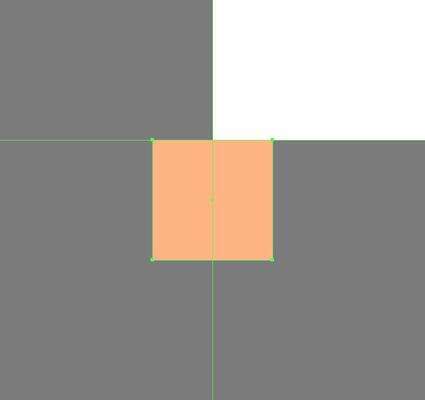
Step 2
Adjust the shape that we’ve just created by adding a new anchor point
to the center of its bottom edge using the Add
Anchor Point Tool (+) and then removing its bottom corner ones using the Delete Anchor Point Tool (-). Give the
resulting shape a 4 px thick outline
(#191515) with a Round Join, making
sure to select and group the two together using the Control-G keyboard shortcut.
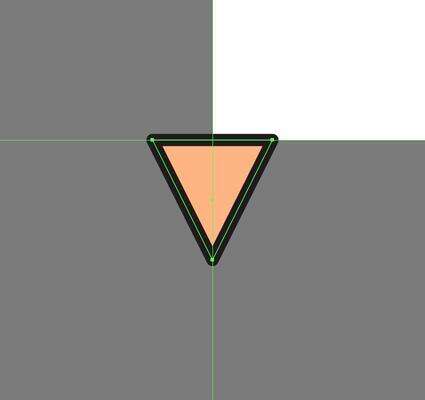
Step 3
Create a copy (Control-C >
Control-F) of the shapes that we’ve just grouped, which we will
horizontally reflect (right click >
Transform > Reflect > Horizontal) and then position on top of the
original shapes as shown, so that their paths overlap.
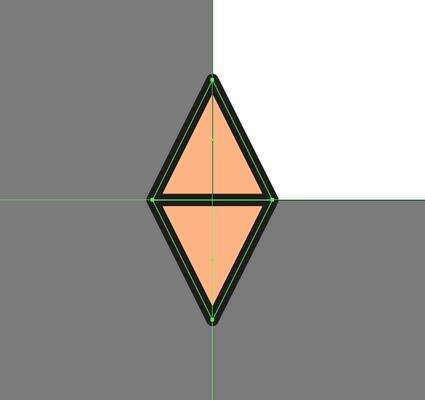
Step 4
Add the smaller details using four 16 x 16 px circles (#A0EFD5) with a 4 px thick outline (#191515), which we
will individually group (Control-G)
and then position onto the larger shapes as shown in the reference image. Once
you’re done, make sure you select and group all of
them together using the Control-G
keyboard shortcut.
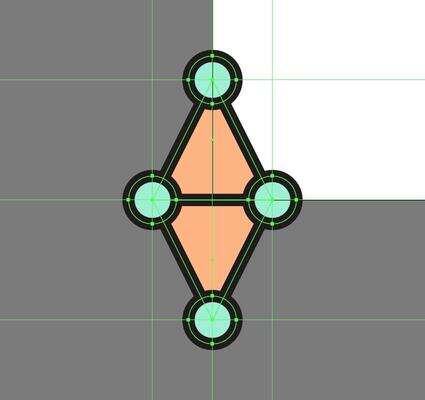
Step 5
Fill in the row by creating ten overlapping copies using the select and
drag method, making sure to change the color of the inner shape on every second one to #FFE180.
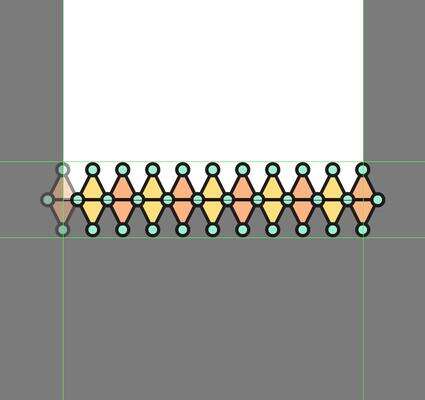
Step 6
Create the second row using ten copies of the orange based triangles,
making sure to position them in-between as seen in the reference image.
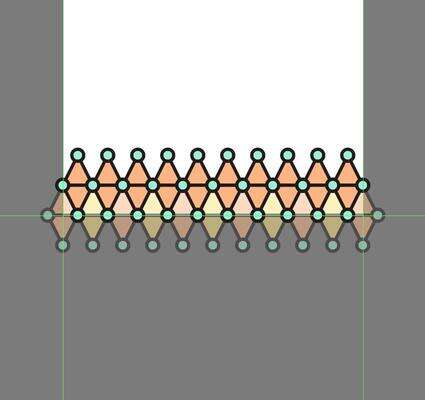
Step 7
Add the remaining rows using nine instances of the ones that we already
have, making sure to adjust the position of the yellow triangles as seen in the
reference image. Once you’re done, select and group all of them together using
the Control-G keyboard shortcut,
making sure to mask them using a 400 x
400 px square (desired shapes selected >
right click > Make Clipping Mask).
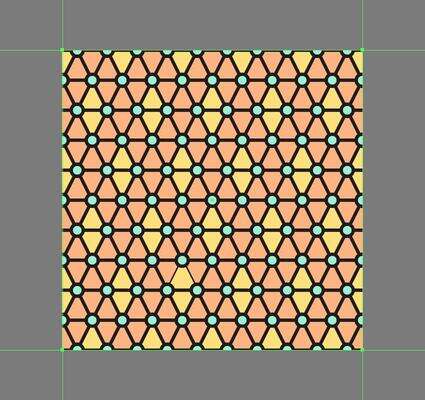
5. How to Turn the
Repeating Pattern Segments Into Actual Patterns
5.
So up to this
point we’ve gone through the process of creating three different repeating line
pattern variations, which means that now we can finally see how we can turn
them into an actual usable pattern.
Step 1
Start by selecting any of the three pattern segments (since the process
is identical), and then going to Object
> Pattern > Make, which will bring up the following window, where we can
fine tune some of its settings. First, let’s give it a custom name.
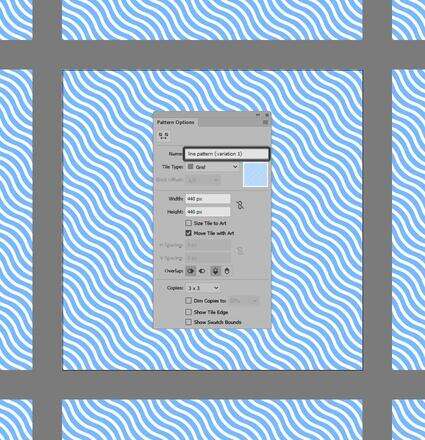
Step 2
Moving on down, we have Tile Type, which we’ll always want to leave set to Grid,
followed by the Width and Height settings, which will
automatically be set to that of the Artboard (400 x 400 px) as long as you check the Size Tile to Art option. Leave all the other settings as they are,
and then create the pattern by simply clicking on the Done button found underneath the current project tab.
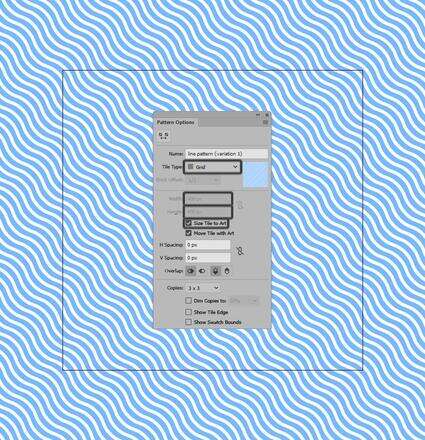
6. How to Use the Patterns You've Created
6.
Okay, so we’ve
created the actual patterns, but how do we actually go about using them?
Well, if you open up the Swatches
panel, you’ll quickly notice that your new patterns have now been added to your
library.
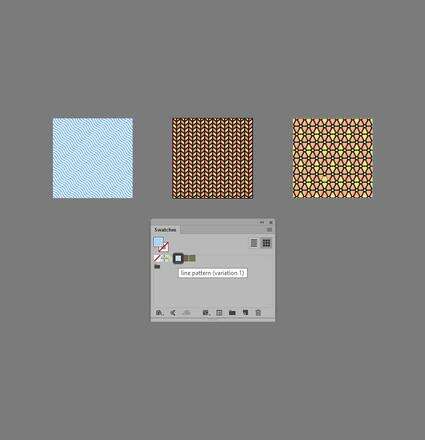
To use any one of them, simply set it as your Fill color and then select the Rectangle Tool (M), and click and drag
in order to draw the desired shape.
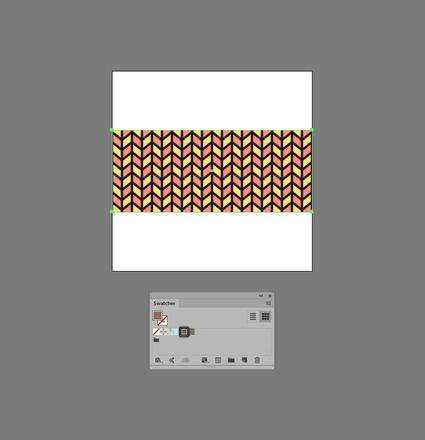
Great Job!
There you have it,
a nice and easy exercise on how to create three different line patterns using
some basic shapes.
As always, I hope you had fun working on the project and managed to
learn something new and useful during the process. That being said, if you have
any questions, feel free to post them in the comments section and I’ll get
back to you as soon as I can!
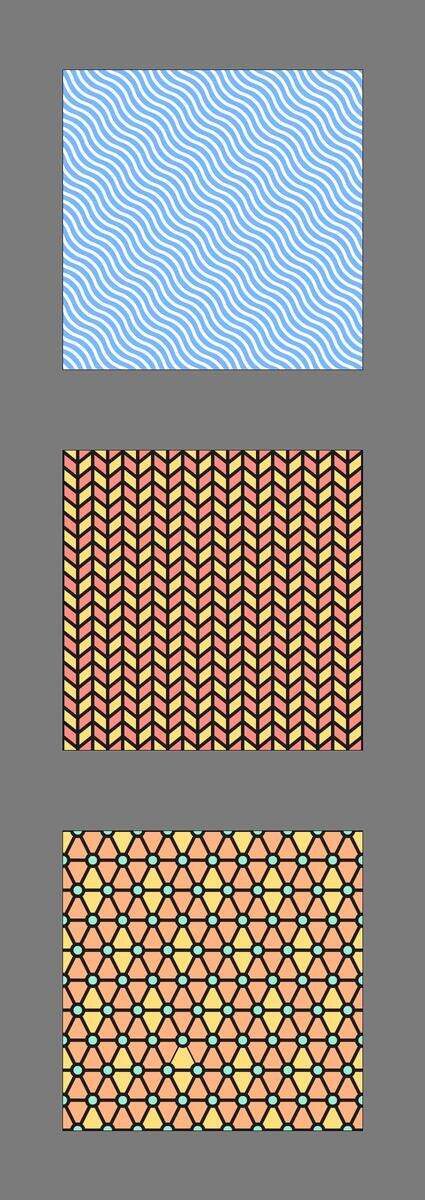
Want to Expand Your Adobe Illustrator Skillbag?!
Just started out using Adobe Illustrator, but haven't quite gotten the hang of it? Learn how to use Adobe Illustrator in our course for beginners, or try these hand-picked tutorials that should get you up and running in no time!
How to Create Pixel-Perfect Artwork Using Adobe IllustratorAs a beginner, creating digital artwork intended for web use can sometimes get a bit frustrating, especially when you put a lot of time into a piece (be it...
Andrei Stefan
19 May 2015
Adobe Illustrator
Understanding Adobe Illustrator's Grid SystemThis quick tip is focused on explaining what the Grid is, how it works, and how you should use it to benefit your design process.
Andrei Stefan
14 Apr 2015
Graphic Design
Quick Tip: Advantages of Using the Clipping Mask Over the Pathfinder PanelIn today’s quick tip, we will shed some light on a tool that a lot of the time gets ignored due to the complexity that most associate with the way it...
Andrei Stefan
16 Sep 2015
Clipping Mask
10 Illustrator Tools Every Designer Should Be UsingIn this article, we’re going to talk about the top ten most useful tools in Adobe Illustrator. Whether you’re into icon design, illustrations or any other...
Andrei Stefan
14 Mar 2016
Graphic Design
40+ Best New Line Patterns (Vector & PSD)Love design resources? Check out this list of incredible line patterns from Envato Market and Envato Elements
Melody Nieves
30 Dec 2018
Adobe Photoshop
Also, don't forget you can always expand your library by heading over to Envato Elements, where you'll find a great selection of vector patterns such as these ones.
Hand Illustrated Line Patterns
A collection of manually tileable line patterns in several flavors and variations so you have a variety to choose from to find the perfect fit for your project. These illustrations offer a naturally imperfect flavor due to their hand-illustrated process.
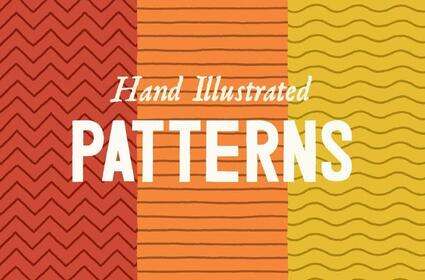
Simple Line Geometric Patterns
40 Simple Line Geometric Seamless Vector Patterns are ideal for those situations when you need a pattern to complement your designs but not to take the leading role.
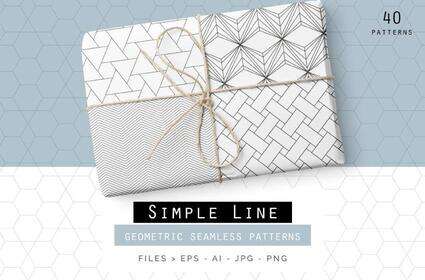
Maze Lines Patterns
Funny and positive, these new patterns can flip your design towards success and make your workflow cheerful and enjoyable. The random arrangement of organic, rounded lines creates a maze effect and allows them to act as cool elements in your artworks.
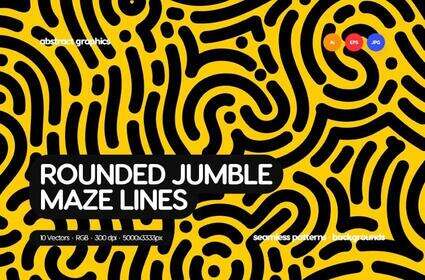
Lines Only Patterns
If you love the bold yet minimal look of a striped background, all with a custom, handmade feel, you have found the right product! They can give your designs a fun, edgy look, and yet they are simple enough to offer you so many creative play options.
